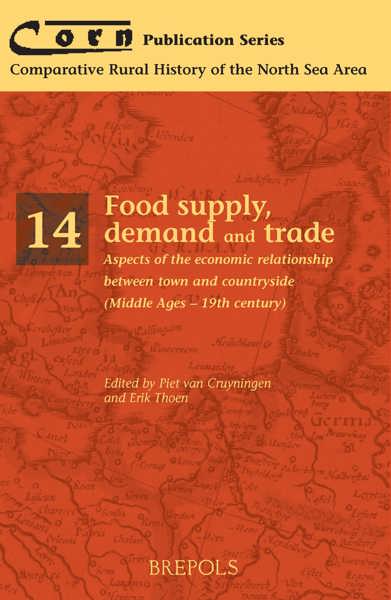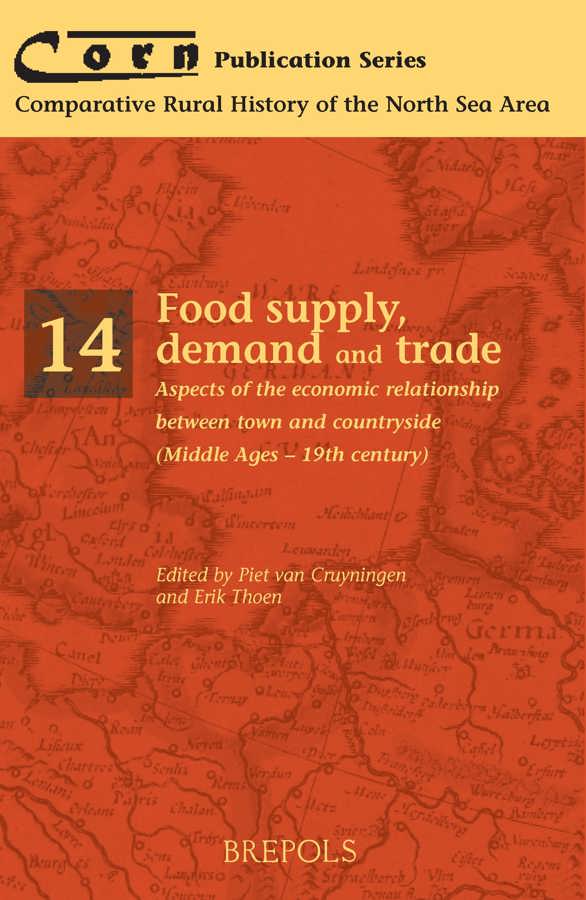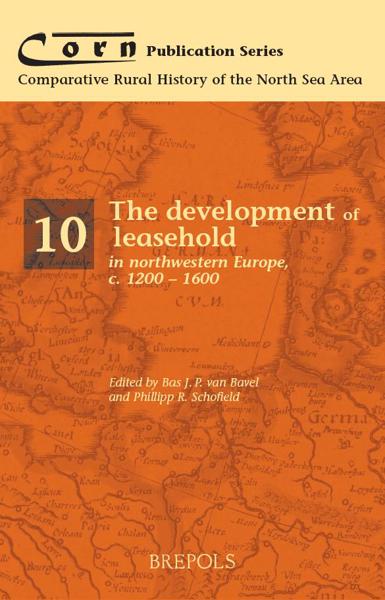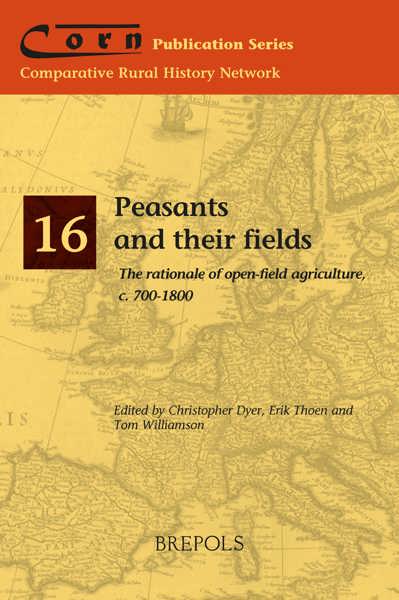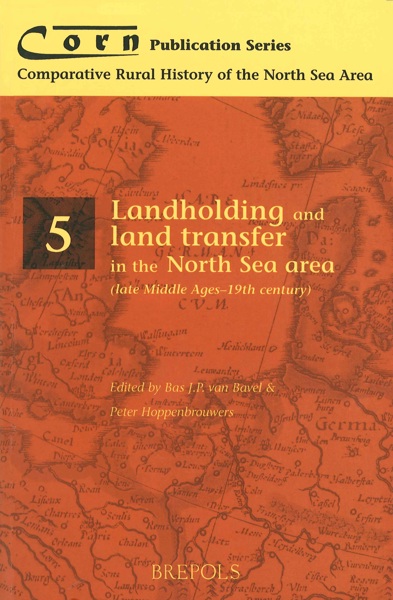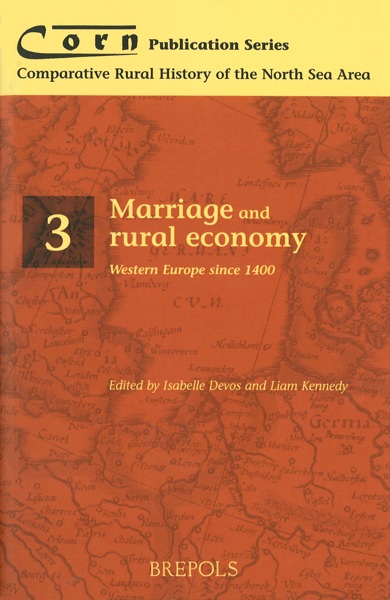
Food supply, demand and trade
Aspects of the economic relationship between town and countryside (Middle Ages – 19th century)
Erik Thoen, Piet Van Cruyningen (eds)
- Pages: 215 p.
- Size:156 x 234 mm
- Illustrations:47 b/w
- Language(s):English
- Publication Year:2012
- € 85,00 EXCL. VAT RETAIL PRICE
- ISBN: 978-2-503-51283-9
- Paperback
- Available
- € 85,00 EXCL. VAT RETAIL PRICE
- ISBN: 978-2-503-55777-9
- E-book
- Available
"(...) this volume adds to the important debates on pre-industrial town-country relations and provides much food for thought." (Dr James Davis, in: Reviews in History, review no. 1571)
"(...) la docena de trabajos que forma este volumen (introducción incluida) permite una mejor comprensión de la incidencia que tuvieron los sistemas de abastecimiento sobre las estructuras agrarias de los territorios circundantes en la zona noroccidental europea. Los textos están, además, bien nutridos con numeroso material elaborado en forma de tablas, gráficos y mapas, que ayudan y complementan su lectura." (José U. Bernardos Sanz, in: Historia Agraria, 64, Diciembre 2014, p. 248-251)
This book is a collection of articles studying various aspects of the relationship between town and countryside during the period from the Middle Ages to the nineteenth century. The focus is on how towns were supplied with basic foodstuffs, and especial attention is paid to the two most urbanized regions within the North Sea area: England and the Low Countries.
Among the articles, several deal with the food-provisioning strategies of some of the major cities within that area – Antwerp, Ghent and London – and show among other things that large cities were unable to meet their requirements from local supplies and had consequently to access markets further afield. Important matters given substantial elucidation are transport costs and market integration.
In historiography, a great deal of attention has been paid to the influence of towns on the countryside and agriculture, and particularly to the relationship between the rise of urban markets and the emergence of commercial agriculture, but there is still no clarity about how town-countryside relationships influenced economic growth. One of the merits of this book is that it opens up new avenues to an understanding of the complex relationship between urban markets and commercial agriculture. The approach differs from article to article, some scholars homing in on the individual strategies of farms, others working more in the macroeconomic tradition. In sum, the book is a valuable contribution to both rural and urban historiography, and can provide a fresh stimulus to the study of economic relationships between town and countryside.
Piet van Cruyningen is senior researcher at the University of Utrecht.
Erik Thoen is professor at the University of Ghent.
